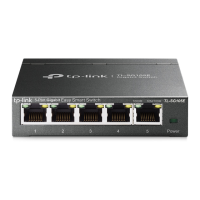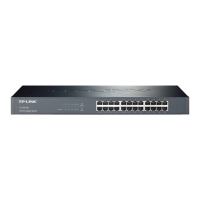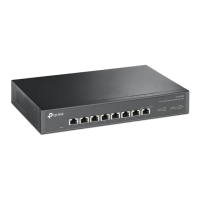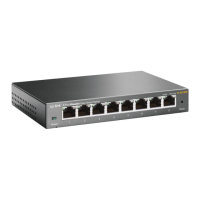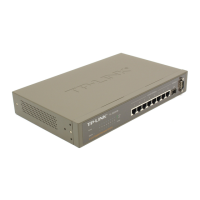Configuring Private VLAN Private VLAN Configurations
User Guide
277
1) Enter the IDs of Primary VLAN and Secondary VLAN, and select Secondary VLAN Type.
Primary VLAN Enter an ID for Primary VLAN. A primary VLAN can pair with more than one
secondary VLANs to compose several private VLANs.
Secondary
VLAN
Enter an ID or an ID list for Secondary VLAN. A secondary VLAN can pair with only
one primary VLAN to compose one private VLAN. To avoid long response time of
the switch, you are recommended to create less than 10 secondary VLANs at a
time.
Secondary
VLAN Type
Select the Secondary VLAN Type.
Isolated: Select this option and users in the same isolated VLAN cannot
communicate with each other.
Community: Select this option and users in the same community VLAN can
communicate with each other.
2) Select promiscuous ports and host ports to be added to the private VLAN.
Promiscuous
Ports
Select promiscuous ports to be added to the VLAN. The port type of up-link port
in a primary VLAN must be Promiscuous. This type of port is used to connect
upper-layer devices or connect the switch with other switches. The PVID of this
port is its primary VLAN ID and the egress rule is untagged.
Host Ports Select host ports to be added to the VLAN. The port type of down-link port in
a secondary VLAN must be Host. This type of port is used to connect to end
users and shield information from upper-layer devices. The PVID of this port is its
secondary VLAN ID and the egress rule is untagged.
3) Click Create.
Note:
When configuring the up-link port, you only need to add the port to one private VLAN and set the
port type as Promiscuous. The switch will automatically add the port to private VLANs with the
same primary VLAN.
2.2 Using the CLI
2.2.1 Creating Private VLAN
Note:
If you need to create a private VLAN with existing VLANs, delete all member ports of the existing
VLANs before creating the private VLAN.
Follow these steps to create Private VLAN:
Step 1 configure
Enter global configuration mode.
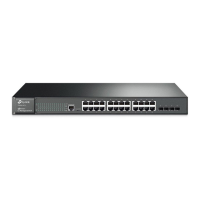
